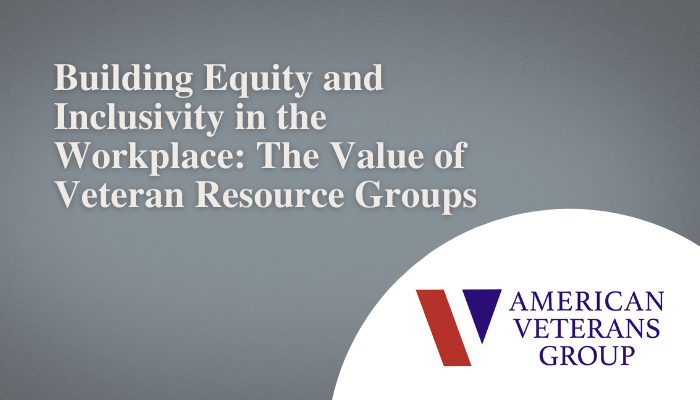
Despite robust hiring efforts, many organizations struggle to retain their veteran hires. Retention issues occur when companies emphasize diversity in the hiring process but don’t invest in equity and inclusion initiatives that support veteran employees. Companies need to strategize how to establish and sustain scalable and impact-oriented systems that support their veteran employees and boost retention and job satisfaction. One step leaders can take to foster an inclusive environment is to establish a Veteran Resource Group (VRG).
VRGs are a type of Employee Resource Group (ERG). These groups are employee-led, voluntary, and work to create an inclusive workplace that aligns with an organizations’ goals and values. Diversity Best Practices reports that ERGs, and VRGs by extension, are business assets that have a positive impact on brand enhancement, marketing, employee recruitment and retention, employee development, and training. According to The Society for Human Resource Management (SHRM), these groups can identify and generate employee support for organizations that align with their company’s mission, provide feedback on HR practices and policies, help translate veteran resumes in civilian terms, help with recruitment, and give insight into which job boards would best reach veteran applicants.
How do VRGs support veterans in the workplace?
VRGs help recruit and retain veteran hires by providing a structured system that veteran employees can rely on for professional engagement, networking, and mentorship.
Boost professional engagement.
VRGs should be open to veterans and non-veterans alike. When non-veteran employees are part of a VRG they’re able to learn more about veteran employees’ experiences, working styles, strengths, and the intricacies of transitioning to a civilian workplace. When more employees participate in VRGs there’s more professional engagement across the board, which leads to a more cooperative working environment.
Provide networking opportunities
Veterans can connect with others in their organization who have undergone similar experiences. As VRGs are not exclusive to just veterans, they also provide an opportunity for veterans to network with non-veterans who are invested in their success.
Support veteran intersectionality
VRGs and ERGs are a great way to acknowledge and support veterans’ intersectionality. Veterans are a deeply diverse group of people and can benefit from being involved in various ERGs.
Connect veteran hires with mentors
VRGs provide mentorship opportunities in which recent veteran hires can connect with other veterans who have successfully transitioned into the civilian workforce. Mentors can lend advice to recent hires about navigating their career after service, and field common questions and concerns related to entering a new work environment.
How do companies build a successful VRG?
When leaders establish any type of ERG, including a VRG, there are best practices they should follow to optimize the group’s efficacy and impact on their organization.
Support VRGs with corporate policy
Groups tend to be more impactful and gain better access to budgetary resources when they’re backed by corporate policy. The formal support of VRGs increases the likelihood that groups will get a say in business operations and decisions by keeping lines of communication open between group members and leadership.
Define charters
Establish a VRG with a clearly defined charter to ensure that leadership and members of the group are on the same page. This alignment can result in higher efficacy rates in areas including community engagement, career development, intersectionality, and recruitment and retention.
Keep groups open to everyone
VRGs and other types of ERGs that are open to everyone provide a space for communities to feel supported and give allies a clear way to get involved and lend support. There should be a sense of community and involvement in the group and its goals across job levels and departments. The more people that are involved in the group, the more impact the group can have on the company at large.
Have designated liaisons and group leadership
A VRG should have a designated leader who’s responsible for periodically getting feedback from members and guiding the group as it sets its goals and purpose. Groups should also have liaisons like executive sponsors, HR personnel, or other full-time employees who help alleviate the responsibilities of group leadership and can function as a direct communication channel to organizational stakeholders.
Establishing a VRG is a concrete step towards improving organizational inclusivity and equity for veteran employees. American Veterans Group’s social mission is to support post 9/11 veterans, especially as they transition to the civilian workforce; by partnering with organizations across the U.S. that help veterans transition to civilian life, American Veterans Group has seen the positive impact resources like VRGs can have on veteran well-being and professional success first-hand. VRGs and other types of ERGs ensure that companies don’t stop their diversity, equity and inclusion efforts once the recruitment phase is over and drive sustainable and impactful inclusive policies and practices.


